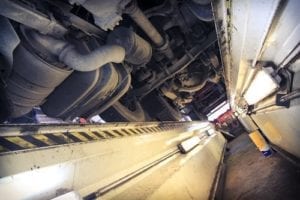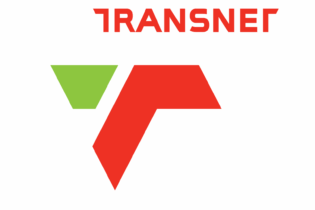Tristan Wiggill learns that vehicle and workshop audits can save operators thousands of rands.
At a point in his career, transport veteran Vic Oliver was contracted to independently audit the vehicles and workshops of a major bottling company with business interests in Angola, Malawi, Zambia, Mozambique, Lesotho, and Swaziland.
Speaking at an Institute of Road Transport Engineer’s meeting in Johannesburg, he said that transport was not in the eyes of that company’s top management and so they didn’t really know what was going on. “In some instances, no vehicle maintenance was being performed and, so, some of the vehicles were in a very bad state,” he reflected.
Today, his audits are 100-point checks that are done on-site. They are neither Certificates of Fitness (CoF) nor roadworthy tests, as he doesn’t use brake roller testing equipment. They are essentially a means for managers to get independent insights into their businesses.
Audit objectives
- Increase a company’s profit margins
- Ensure vehicle fitness and track regular maintenance procedures
- Reduce accidents
- Reduce roadside breakdowns
- Reduce the amount of rework
- Improve operating standards
Assets and liabilities
“One of the first things we ask operators about is their asset register, which is frequently non-existent. It is important for companies to develop policies that detail how they handle and monitor breakdowns.
“For auditing to be beneficial, top management has to support it. Likewise, the people on the ground – in the workshops – have to buy into it. Often, there is resistance from the guys working in the depots, because they don’t want outsiders telling them how to run their businesses,” explains Oliver.
Typically, drivers will complain about a fault with a truck. On hearing this, a technician may suggest that the truck be sent to the workshop, only for the manager to demand to know where the truck is and, on finding out, retort with “drive now, fix it later”.
“We also find that, when vehicles break down, the driver will phone the office but can’t properly explain what’s wrong. In some cases, a mechanic might be sent 200 km or 300 km to assist only for someone else to have helped the driver in the interim. So, the driver could be 10 km down the road and difficult to find,” he says.
Checks and balances
“Vehicles are normally bought in a particular month,” Oliver continues, “which could be during peak operating periods. All of a sudden, all the CoF’s are due. So, we say to operators: ‘Why don’t you stagger them, so as to keep the workshop busy in leaner times and have trucks available during peak periods?’”
Oliver says many companies keep their vehicle service notifications on a computer, but this needs to be regularly checked so as not to be forgotten about. “The secret is to get drivers more accustomed to audits and for them to know their vehicles’ servicing requirements,” he adds.
In many cases, small things are costing operators large sums of money. Oliver expands, “We put in a system that saved a major vehicle rental company, with over 3 000 vehicles in its fleet, R750 000 a year in batteries. We found that anyone was able to jump-start their vehicles and that the batteries were being stolen or swapped for older ones.” He suggests that battery management be designated to a single person.
Water levels in batteries are also frequently not maintained, although this problem is being reduced, somewhat, through maintenance-free battery technology. But, the batteries in car carriers, for example, which are difficult to access due to lower deck heights, tend to be neglected.
Common audit findings
- No vehicle replacement policies
- Lapsed CoFs
- Missing VIN data plates
- No visible notification of upcoming vehicle service
- Loose fifth wheel bolts
- Damaged/leaking fuel tanks
- Incorrect anti-freeze used
- ABS cables disconnected
- Load-sensing rods not secured
- Incorrect settings applied to brake boosters
- Worn brake linings
- Inner tyres underinflated
- Oil leaks
- Incorrect oil levels used
- Corroded battery terminals
- Over-greased fifth wheels
Home ground disadvantage
Oliver believes that vehicle breakdowns have become a true barometer of maintenance. He says, “Many operators don’t have a sufficient workshop to service their fleets. As a result, servicing takes place in the yard, where parts are vulnerable to dust ingress. There are no pits in the yards either, so technicians can’t get underneath the trucks, where the real maintenance work gets done.”
Oliver has some advice for companies looking to outsource their vehicle servicing requirements. “Check the company’s housekeeping; if the housekeeping is good, you probably don’t have to check their bank balance,” he suggests.
Handouts
Oliver’s workshop audits have ascertained that many technicians don’t possess adequate hand tools. “No records are kept of the tools that are coming in and going out of the workshop; damaged trestles are being used and waiting for replacement parts is a major problem. Workshops are without welding bays, water is found in compressors, and service schedules are not being kept,” he decries.
“Most companies audited don’t measure their productivity. While they pay their mechanics by the hour, no-one is measuring the actual hours worked. If you measure productivity, you can manage the workshop far better. Start looking at the causes of low productivity and, likewise, with efficiency.”
Some yards are tightly packed with vehicles. This causes a problem for visiting car carriers because they are not easy to manoeuvre and so much time is wasted waiting for drivers to move trucks around.
The dearth of youth entering workshops is another area of concern for Oliver, who says he is saddened to see so few youngsters entering the trade. “There is so much to learn and the industry is changing so fast. Unless you keep up to date, you get left behind. Already there is a very poor technical knowledge of trailers in the industry,” he concludes.
Balanced advice
- Enhance communication flow between drivers, technicians, and management
- Perform proper, detailed pre-trip inspections
- Educate drivers about the vehicles they drive
- Cultivate a preventative maintenance philosophy
- Motivate drivers to know when their vehicles are due for servicing
- Place service reminders, in the form of stickers, in the cab
- The ratio of planned to unplanned servicing work should be split 80/20








